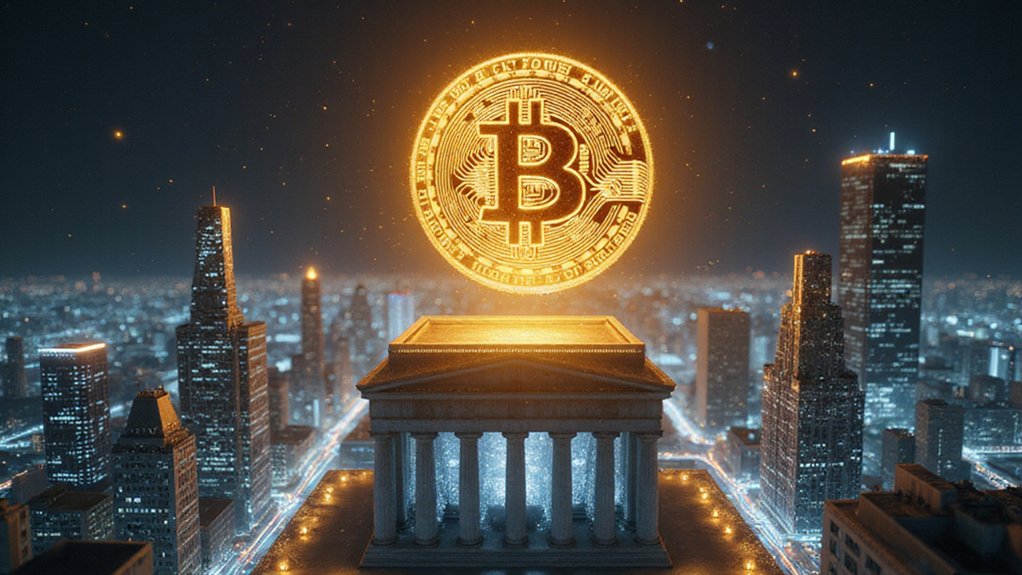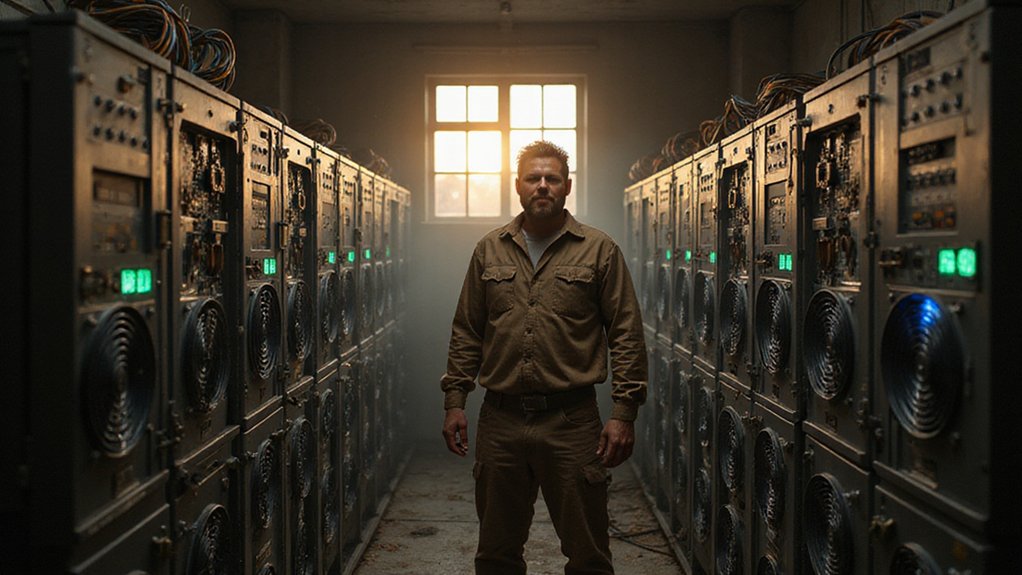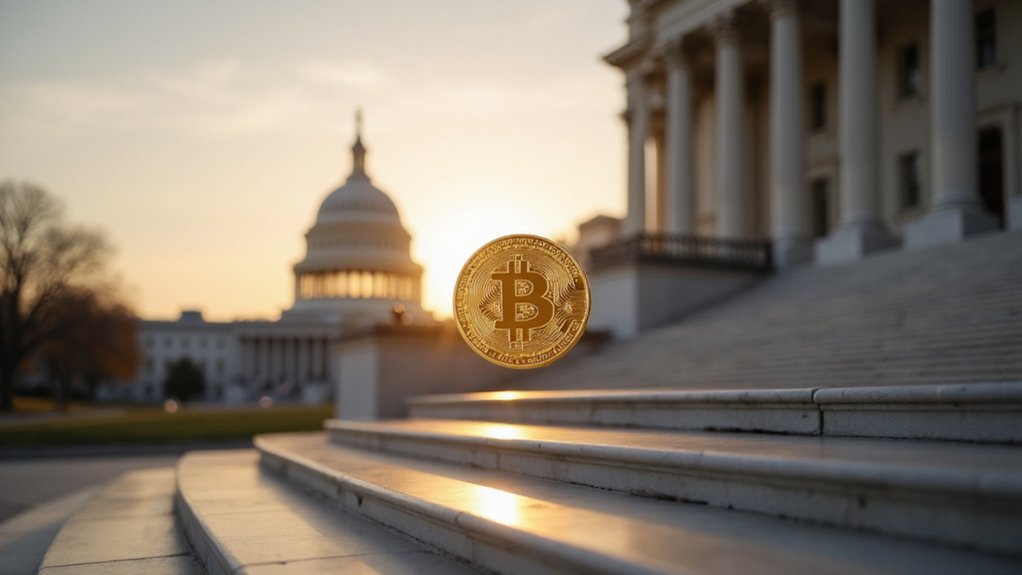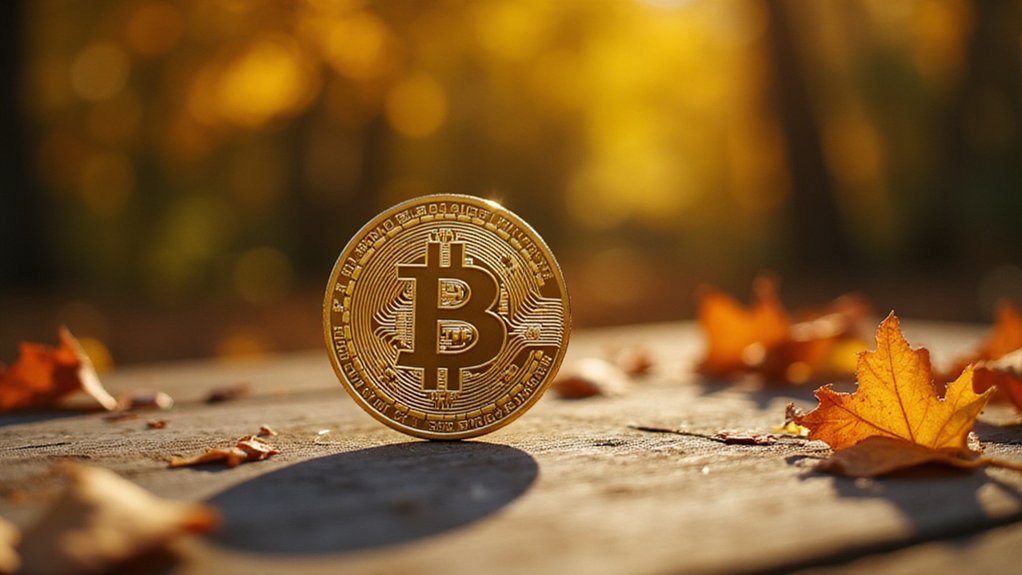Trading safely on Bittrex requires layered security protocols and strategic risk management. Beginners should implement complex passwords, enable two-factor authentication, and complete identity verification to increase withdrawal limits from 0.4 to 100 BTC. Prudent traders utilize limit and stop-loss orders while avoiding high-volume transactions until experience develops. Asset diversification, offline storage for substantial holdings, and vigilant market research form the foundation of sustainable trading practices. The journey from novice to adept trader unfolds through methodical application of these safeguards.

Why do so many cryptocurrency enthusiasts find themselves traversing the treacherous waters of digital asset trading without adequate safeguards?
Perhaps it’s the allure of quick profits or the misguided notion that digital trading somehow circumvents traditional financial risks.
Whatever the impetus, establishing robust security protocols on platforms like Bittrex remains paramount for neophytes and veterans alike.
The foundation of any secure trading regimen begins with impenetrable account protection.
Users must implement complex passwords—combinations that would make cryptographers nod in approval—and enable two-factor authentication, that elegant digital bouncer checking credentials twice.
Verification of email addresses serves as a bulwark against the ever-present specter of phishing attempts.
Bittrex’s elastic multi-stage wallet architecture (storing most assets offline) provides reassurance to the security-conscious trader.
Verification increases your withdrawal limits substantially, from a restrictive 0.4 BTC to a generous 100 BTC daily.
Identity verification, while occasionally viewed as intrusive, constitutes an essential component of safe trading.
The provision of personal details, government-issued identification, and the seemingly narcissistic selfie all contribute to a compliant trading environment that adheres to anti-money laundering regulations.
These measures, far from arbitrary bureaucracy, establish legitimate market participation.
Bittrex’s commitment to security is evident in their no successful hacks since the platform was founded in 2014.
Recent incidents like Coinbase’s breach through customer service exploitation highlight the importance of choosing platforms with robust security measures.
Traders must acquaint themselves with market mechanics before committing significant capital.
Understanding the taxonomy of orders—limit, market, stop-loss—can prevent catastrophic losses stemming from mechanical ignorance.
Novices would be well-advised to practice with modest stakes rather than plunging headlong into high-volume trading.
The prudent trader also develops risk management strategies: implementing stop-loss orders, diversifying across asset classes, and maintaining vigilant market awareness.
Asset selection demands methodical research rather than speculation based on social media fervor or FOMO¹.
Evaluating fundamentals, monitoring performance metrics, and understanding withdrawal parameters constitute basic due diligence.
For substantial holdings, offline storage solutions offer protection against exchange vulnerabilities.
The conscientious trader remains cognizant of regulatory developments, ensuring compliance with both platform policies and jurisdictional requirements.
This vigilance, combined with ongoing education about market dynamics, creates a foundation for sustainable trading practices—an approach that values longevity over the ephemeral thrill of uncalculated risk.
¹Fear Of Missing Out
Frequently Asked Questions
How Long Do Bittrex Withdrawals Typically Take to Process?
Bittrex withdrawals typically process within 30 minutes to a few hours, though reality often proves less predictable.
Network congestion (particularly during market volatility), cryptocurrency type, and transaction fees greatly impact timelines.
Bitcoin withdrawals might require several hours for adequate confirmations, while faster networks like Stellar can complete in minutes.
The prudent trader recognizes that patience becomes an unexpected virtue in cryptocurrency transactions—Bittrex’s internal security protocols occasionally extending processing further during high-risk periods.
Does Bittrex Offer Staking Rewards for Any Cryptocurrencies?
Bittrex offers staking rewards, though its program remains conspicuously limited compared to competitors.
Currently, only Cardano holders can stake their assets, receiving a 5.5% reward—a decent yield, though hardly revolutionary in today’s DeFi landscape.
While platforms like Binance.US support staking for 23 cryptocurrencies, Bittrex has yet to expand its offerings despite market demand.
Whether this reluctance stems from regulatory caution or operational constraints remains unclear, though users seeking diverse passive income streams might look elsewhere.
Can I Access Bittrex Through a VPN?
Users can technically access Bittrex through a VPN, which may enhance privacy and security through encrypted connections.
However, this practice potentially violates Bittrex’s terms of service—particularly if employed to circumvent geo-restrictions.
The consequences? Account suspension or termination (a rather inconvenient outcome for the aspiring trader).
While VPNs offer anonymity and protection against potential security threats, users should weigh these benefits against the platform’s compliance requirements and the inherent legal risks involved.
What Fees Does Bittrex Charge for Different Trading Volumes?
Bittrex implements a volume-based fee structure that rewards high-volume traders with discounts.
While specific tiers aren’t publicly delineated, the platform calculates fees based on 30-day USD trading volume, with daily updates reflecting volume changes.
Lower-volume traders may face fees up to 0.40%, while high-volume participants enjoy reduced rates.
This sliding scale (noticeably higher than Binance’s 0.1% but more competitive than Bitpanda’s eye-watering 1.49%) incentivizes liquidity—a standard industry practice, if somewhat opaquely implemented at Bittrex.
How Does Bittrex Handle Cryptocurrency Hard Forks?
Bittrex adopts a methodical approach to hard forks, temporarily closing deposit and withdrawal functions while maintaining trading operations throughout the process.
The exchange takes a snapshot of user balances at the fork point and typically supports the chain with majority mining pool backing.
New tokens resulting from forks undergo evaluation against Bittrex’s listing criteria, with users potentially receiving these tokens if approved.
Security remains paramount, with wallets reopening only once network stability is confirmed.









